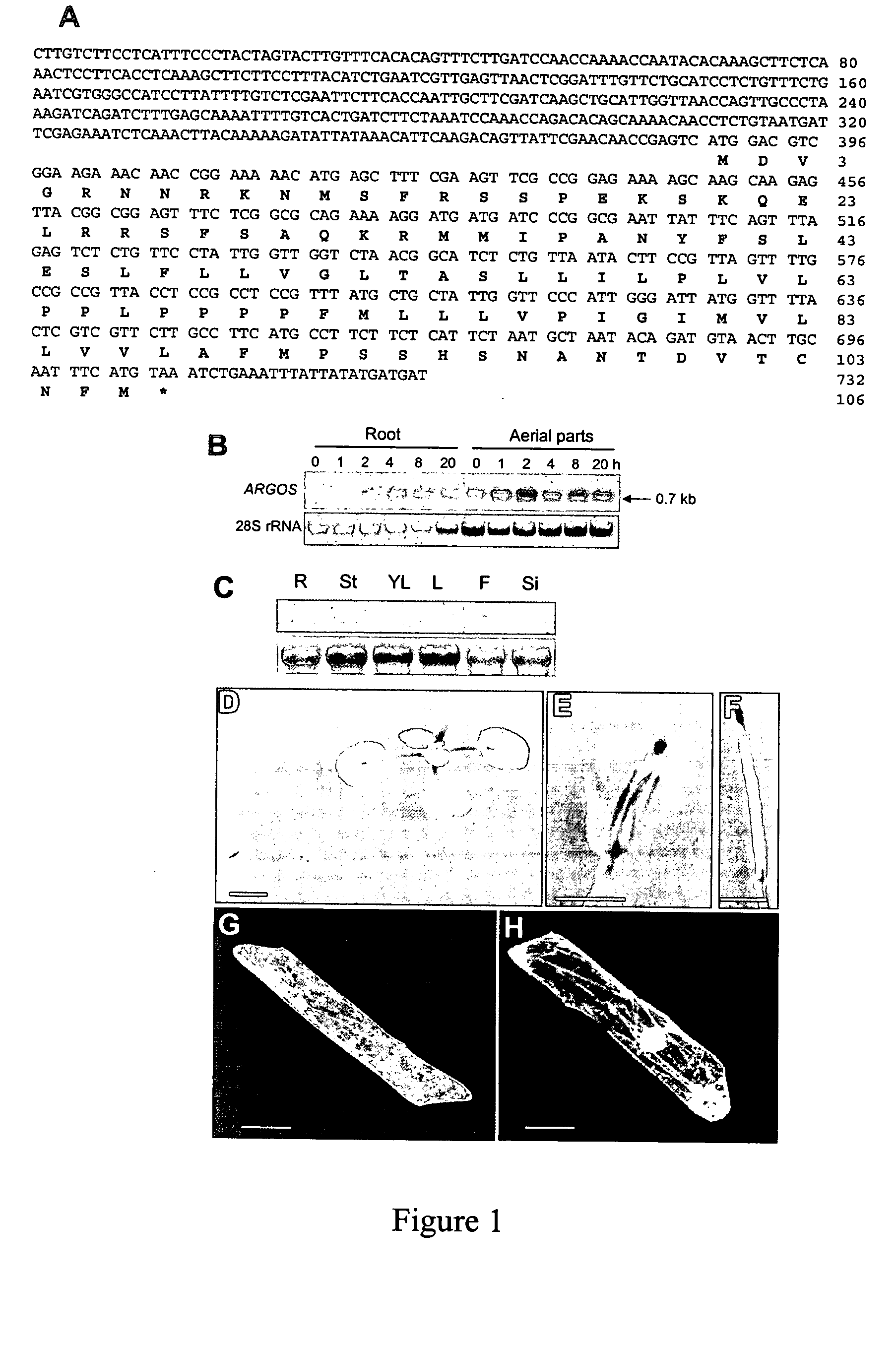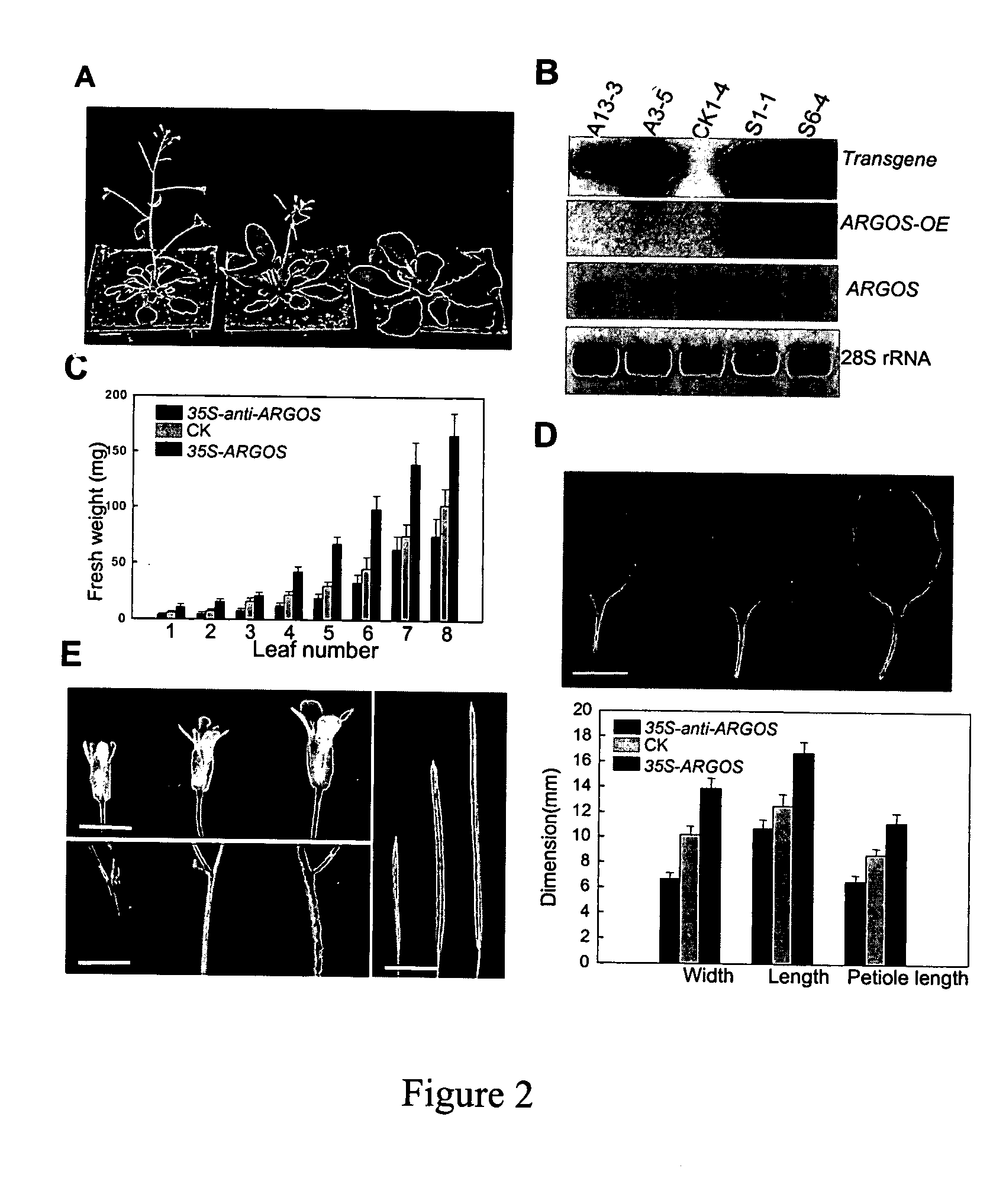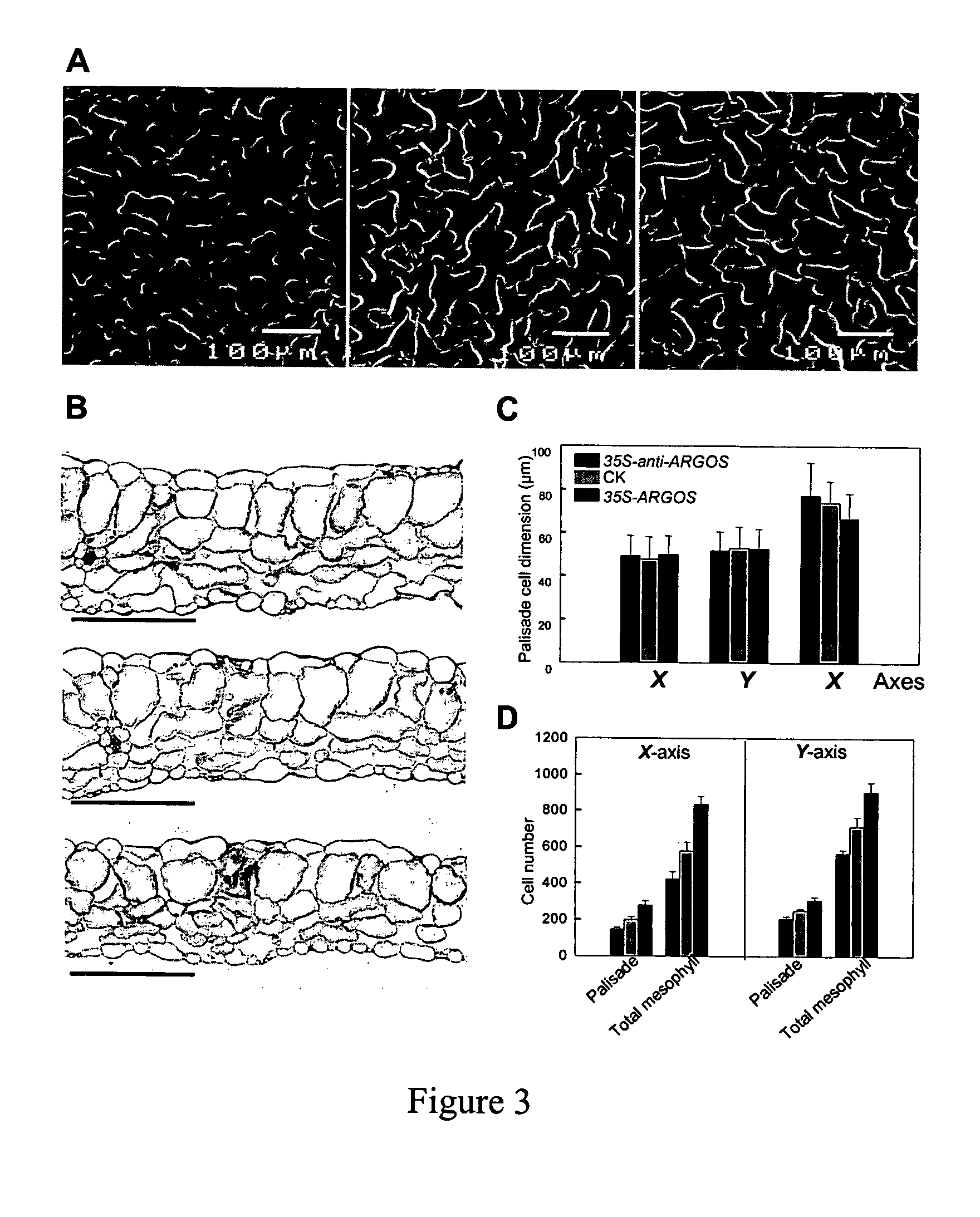Arabidopsis argos, a novel gene involved in organ development
a gene and organ technology, applied in the field of gene manipulation of plants, can solve the problems of the influence of signals affecting organ development, and the inability to predict the development of organs, etc., and achieve the effect of regulating the development of aerial parts of plants and little known how auxins regulate the development of plants
- Summary
- Abstract
- Description
- Claims
- Application Information
AI Technical Summary
Problems solved by technology
Method used
Image
Examples
example 1
Methods
[0054] Plant Materials and Growth Conditions: Arabidopsis Columbia (Col.) ecotype was used. Seeds were sterilized in 50% bleach with 0.1% Triton X-100 for 10 min. and washed three times with sterilized water. Sterilized seeds were plated on MS medium, and vernalized in darkness at 4° C. for 2 days before the plates were transferred to a culture room at 23° C. under a 16 h-light / 8 h-dark photoperiod. For NAA treatment or root observation, seeds were germinated and seedlings were grown vertically for 7-14 days. For morphological examination of aerial parts, seedlings were transferred to soil 7-10 days after germination, and placed in a growth chamber at 23° C. under a 16 h-light / 8 h-dark photoperiod.
[0055] Plant Transformation: A cDNA fragment containing the ARGOS ORF was cloned into pVIP96 (Leu et al., 1995) in sense and antisense orientation. Transgenic plants were generated by Agrobacterium tumefaciens-mediated transformation via vacuum infiltration (Betchtold et al., 1993...
example 2
ARGOS is a Novel Gene and Highly Induced by Auxin
[0061] Previous studies showed that the Arabidopsis NAC1 and SINAT5 mediate auxin signals to promote lateral root development (Xie et al., 2000; Xie et al., 2002). To further understand the molecular events surrounding auxin-regulated lateral root formation, a cDNA microarray analysis was performed by Incyte Genomics to identify genes responsive to NAA treatment in roots of 7 day-old seedlings (unpublished data). One gene, which is identical to the putative gene At3g59900 in Arabidopsis database, was found to be highly induced by NAA treatment (data not shown). We designated this gene as ARGOS (for Auxin-Regulated Gene involved in Organ Size, see below). RNA gel blot analysis showed that the expression of ARGOS was induced by auxin in both roots and aerial parts (FIG. 1B).
[0062] The cloned ARGOS cDNA is 732 bp in length (FIG. 1A)(SEQ ID NO: 1), which is almost full length as analyzed by RNA blot. The putative ARGOS protein (SEQ ID N...
example 3
Expression and Cellular Localization of ARGOS
[0063] To determine the expression pattern of ARGOS, RNAs from the dissected organs of mature plant as well as rosette leaves of two-week old seedlings were analyzed. ARGOS was expressed at low levels in roots, inflorescence stems, flowers, young rosette leaves and siliques (FIG. 1C). A detailed examination was performed with transgenic plants expressing an ARGOS-GUS fusion gene. In 12 day-old seedlings, strong GUS expression was observed in root pericycle, petiole and leaf vascular bundles, and moderate GUS expression was detected in leaf blade (FIG. 1D). In flowers, high expression levels were seen in stamen filaments as well as in the apex and base of juvenile and elongating siliques (FIGS. 1E, F).
[0064] Computer programs predicted the C-terminal leucine-rich domain of ARGOS to be a putative transmembrane domain. We therefore investigated its cellular localization in onion epidermal cells using 355-ARGOS-GFP and 35S-GFP-ARGOS fusion ...
PUM
| Property | Measurement | Unit |
|---|---|---|
| nucleic acid | aaaaa | aaaaa |
| size | aaaaa | aaaaa |
| cell size | aaaaa | aaaaa |
Abstract
Description
Claims
Application Information
 Login to View More
Login to View More - R&D
- Intellectual Property
- Life Sciences
- Materials
- Tech Scout
- Unparalleled Data Quality
- Higher Quality Content
- 60% Fewer Hallucinations
Browse by: Latest US Patents, China's latest patents, Technical Efficacy Thesaurus, Application Domain, Technology Topic, Popular Technical Reports.
© 2025 PatSnap. All rights reserved.Legal|Privacy policy|Modern Slavery Act Transparency Statement|Sitemap|About US| Contact US: help@patsnap.com



